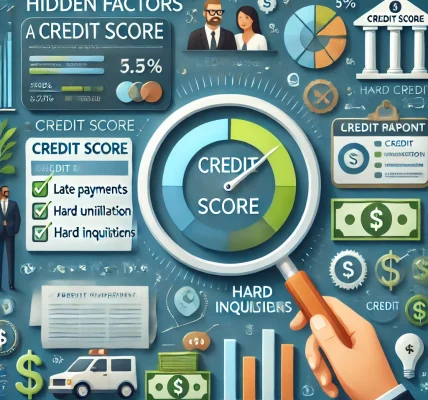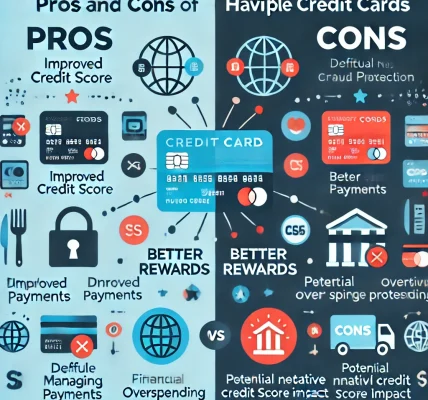Having bad credit can make it challenging to get approved for credit cards, but that doesn’t mean you’re out of options. There are credit cards designed specifically for individuals with low credit scores or limited credit history. These cards can help you rebuild your credit, manage expenses, and regain financial stability. However, it’s essential to choose wisely and use them responsibly.
In this guide, we’ll explore the best credit cards for bad credit, how to use them effectively, and strategies to improve your credit score over time.
Understanding Bad Credit and Its Impact
Your credit score is a key factor in determining your financial credibility. If your FICO score is below 580, it’s generally considered poor credit. Factors contributing to bad credit include:
- Late or missed payments
- High credit utilization
- Defaulted loans or bankruptcy
- Multiple hard inquiries in a short period
Having bad credit makes it harder to qualify for traditional credit cards, but secured and specialized credit cards offer opportunities to rebuild your score.
Types of Credit Cards for Bad Credit
There are different types of credit cards available for individuals with poor credit. The most common ones include:
1. Secured Credit Cards
- Require a refundable security deposit, which serves as your credit limit.
- Easier to get approved since the deposit reduces the lender’s risk.
- Responsible use helps build a positive payment history and improves your credit score.
2. Unsecured Credit Cards for Bad Credit
- Do not require a security deposit.
- Usually come with higher interest rates and lower credit limits.
- Best for people who don’t want to tie up money in a deposit but still need access to credit.
3. Store Credit Cards
- Offered by retailers and often easier to qualify for.
- Usually have high interest rates but can be useful for small purchases to build credit.
4. Credit Builder Loans and Cards
- Some financial institutions offer hybrid products that work like a mix of a loan and credit card to help improve credit scores.
- Best for those looking for structured ways to rebuild credit.
Best Credit Cards for People with Bad Credit
1. Capital One Platinum Secured Credit Card
Pros:
- Low minimum security deposit ($49, $99, or $200).
- No annual fee.
- Reports to all three major credit bureaus.
Cons:
- No rewards program.
- High APR if you carry a balance.
2. Discover it® Secured Credit Card
Pros:
- Earn 1%-2% cash back on purchases.
- No annual fee.
- Free FICO score monitoring.
- Refundable security deposit with responsible use.
Cons:
- Requires a minimum $200 deposit.
3. Open Sky Secured Visa Credit Card
Pros:
- No credit check required for approval.
- Reports to all three credit bureaus.
Cons:
- $35 annual fee.
- No upgrade path to an unsecured card.
4. Credit One Bank Platinum Visa
Pros:
- Accepts applicants with bad credit.
- Offers cash back rewards on eligible purchases.
Cons:
- High annual fee.
- High APR rates.
5. Petal 1 “No Annual Fee” Visa Credit Card
Pros:
- No security deposit required.
- Reports to major credit bureaus.
- Can help increase your credit limit over time.
Cons:
- Approval process includes alternative credit evaluation.
How to Use Your Credit Card Wisely to Rebuild Credit
Getting a credit card is just the first step. The real challenge is using it responsibly to improve your credit score. Here are some essential tips:
1. Make Payments on Time
- 35% of your credit score is based on your payment history.
- Set up auto-pay or reminders to ensure you never miss a due date.
2. Keep Credit Utilization Low
- Try to keep your credit utilization below 30%.
- Example: If your credit limit is $500, keep your balance under $150.
3. Pay More Than the Minimum Due
- Paying only the minimum keeps you in debt longer.
- Aim to pay your full balance each month to avoid interest charges.
4. Monitor Your Credit Report Regularly
- Get a free credit report from AnnualCreditReport.com.
- Check for errors or fraudulent activity.
- Dispute inaccuracies immediately to keep your score accurate.
5. Limit Hard Credit Inquiries
- Each hard inquiry can lower your score by a few points.
- Apply for credit only when necessary.
6. Consider a Credit Limit Increase
- Some issuers will increase your credit limit after 6 months of responsible use.
- A higher limit can help lower your utilization ratio.
7. Use Your Card for Small Purchases
- Regular, responsible usage shows lenders you can manage credit well.
- Consider using it for gas, groceries, or a monthly subscription.
8. Upgrade to an Unsecured Card
- After 6-12 months of responsible usage, check if you’re eligible for an unsecured card.
- Unsecured cards don’t require a deposit and often come with better terms.
Common Mistakes to Avoid
🚫 Maxing Out Your Credit Card – High balances hurt your score.
🚫 Making Late Payments – This is the fastest way to damage your credit.
🚫 Applying for Multiple Credit Cards at Once – Can lead to multiple hard inquiries.
🚫 Ignoring Your Credit Score – Regular monitoring helps track progress.
🚫 Closing Old Accounts – Keep accounts open to maintain a longer credit history.
Final Thoughts
Having bad credit isn’t the end of the world—it’s a chance for a fresh start. By choosing the right credit card and using it responsibly, you can rebuild your credit score and improve your financial future. Be patient, make smart financial decisions, and stay disciplined. Over time, your efforts will pay off, and you’ll qualify for better credit opportunities.
Key Takeaways:
✅ Choose a secured or beginner-friendly credit card. ✅ Make on-time payments to build a positive credit history. ✅ Keep credit utilization below 30%. ✅ Monitor your credit score and report regularly. ✅ Upgrade to a better credit card once your score improves.




